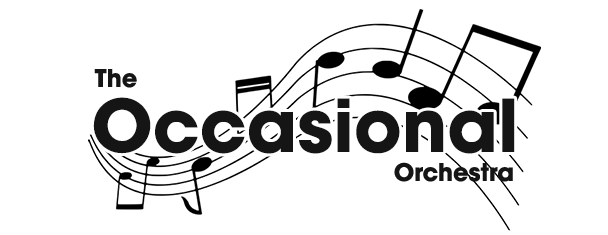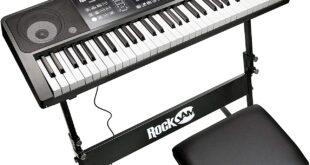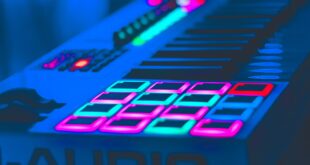Traditional acoustic pianos are imitated by digital pianos. Like an acoustic piano, digital pianos typically have 88 keys. They are often manufactured in one of three configurations: upright, in a cabinet, or on a keyboard stand, similar to a classic upright acoustic. In terms of touch, sensation, and sound, digital pianos are often closer to acoustic piano.
While digital pianos can fall short in terms of feel and sound when compared to acoustic pianos, they have the advantages of being smaller, weighing less, and costing less than an acoustic piano. Furthermore, digital pianos do not require tuning and can be tuned to match the tuning of another instrument (e.g., a pipe organ). They can be linked to an amplifier or a PA system to produce a sound loud enough for a large arena, or they can be heard exclusively through headphones, as with other electronic musical instruments. Aside from the piano, some digital pianos can replicate various sounds, the most common of which being pipe organ, electric piano, Hammond organ, and harpsichord. In music schools and studios, digital pianos are frequently employed to replace traditional instruments.
Digital pianos are a fantastic resource for people of all ages and backgrounds. These musical instruments can be utilised by a wide range of people on a variety of levels, including personal, professional, and recreational. Digital pianos have changed the landscape of musical professionalism and production since their beginnings, affecting the way musicians and enthusiasts practise and play music.
Learning and playing with a piano has never been easier or more economical than it is now, thanks to digital pianos. Consumers have been looking for the greatest digital pianos within their budgets because of the options they present. Due to a lack of expertise with particular brands, technology, and special features, this search can be a very tiresome and stressful effort at times.
Due to these challenges, this article is intended to serve as a complete digital piano buyer’s guide that provides a concrete starting point for buyers who are unsure about digital pianos. It is a disservice to both the buyer and the manufacturer if an inappropriate purchase is made owing to a lack of information about digital pianos, resulting in a negative experience for the customer and a loss of revenue for the manufacturer.
Table of Contents
Key Advantages
If you’re still on the fence about whether or not to buy a digital piano, there are a few major factors to consider. First and foremost, digital pianos are significantly more convenient than their acoustic counterparts: they are much lighter, easier to move, and most versions can be disassembled for storage or transportation. If money is an issue, a digital piano is the way to go, as they are significantly less expensive than an acoustic piano and don’t require frequent tuning, so you’ll save money on maintenance as well. When it comes to technical characteristics, most digital pianos allow you to record your performance, which is useful for individuals who are just getting started with the instrument. Finally, some digital pianos support MIDI and accept memory cards, allowing you to save your music to a computer.
88 vs. 61 Keys
Although a digital piano or keyboard with a full set of 88 keys may appear to be a space saver, most experts recommend getting one with a full set of 88 keys. Why? Because shifting from a smaller keyboard to a larger keyboard can be challenging when learning to play or practising the piano. Because most piano lessons are conducted on a fixed, acoustic piano, switching back and forth may be difficult for your youngster. Because playing the piano is both a visual and muscular activity, a student who has grown accustomed to utilising a smaller keyboard may find it difficult to adjust to a larger one.
Digital Piano vs. Keyboard
Many students who want to learn to play the piano do not begin by learning to play on a grand piano. When learning to play the piano, most people will purchase a digital piano or a keyboard due to the high cost and space requirements. It’s not uncommon for individuals to mix up the terms “digital piano” and “keyboard.” Many people are unaware that digital and electronic pianos, as well as keyboards, have substantial differences. We’ll go through some of the distinctions and what they represent in terms of the music that each instrument can make. When you’re ready to buy a keyboard or piano, perhaps you’ll have all the information you need.
Keyboards and digital pianos are meant to do quite different things. As the name implies, a digital piano is merely a digital reproduction of an acoustic or grand piano. They have weighted keys that make playing them feel more like playing a standard piano. They’re perfect for individuals who wish to learn to play the piano but don’t want to spend a fortune on it. Not to mention the difficulty in locating one. After all, a standard piano isn’t exactly cheap, simple, or convenient. Digital pianos are less expensive, cheaper to maintain, and easier to carry than traditional pianos. Digital pianos are even used by certain expert players.
Traditional pianos, on the other hand, were meant to generate a considerably narrower spectrum of sounds than keyboards. Because of the variety of capabilities accessible on a keyboard, it is better suited to intermediate to advanced musicians who are interested in and capable of creating their own sound. It’s unusual for such players to use a keyboard to replicate the sounds of a regular piano. Keyboards are often smaller than digital pianos and lack weighted keys. Keyboards are intended for usage by more experienced artists and producers. Hundreds, if not thousands, of sounds, are frequently included with keyboards. You may modify your sound with a keyboard.
Not all 88 key digital pianos are the same. There are significant differences between digital pianos. Standard digital pianos, upright digital pianos, and stage pianos are the three basic varieties of digital pianos. Upright vertical pianos have a big cabinet, similar to a traditional upright piano. A digital piano is typically equipped with the best hammer action key mechanisms and tone generating engines in order to be equivalent to a real upright piano. They might take up the same amount of space as a regular one, but they require less upkeep. Digital pianos used on stage are known as stage pianos. They are more portable and durable than regular digital pianos when compared to a traditional piano. Standard digital pianos are designed for at-home to practise and pleasure. They aren’t as huge or feature-rich, but they provide a superb sound-to-portability ratio.
In the same sense, keyboards come in a variety of shapes and sizes. Keyboards that you’d find in a toy store are on the cheap end, whereas keyboards designed for serious musicians and producers can be found in music stores. To provide the user more control over their sound, these keyboards are typically loaded with numerous voices, tones, rhythms, and sound effects. Synthesizers and MIDI controllers are found on this sort of keyboard.
The number of keys is another feature that distinguishes keyboards. Some keyboards feature fewer keys than a digital piano’s typical 88 keys. This allows certain keyboards to be more compact, and it has no effect on the player’s ability to create music. While some keyboards include weighted keys, the majority do not. This implies that their keys do not move or respond in the same way that piano keys do.
What to choose?
If you’re attempting to pick between a digital piano and a keyboard, think about the music you want to play. A digital piano could be ideal if you’re just learning to play or like a more conventional sound. A keyboard is generally a better choice if you want something that has a wider range of sounds and can be used more easily in production or recording.
What kinds of digital piano are there?
So, if you’ve already decided that you want a digital piano but there is a bewildering assortment of different types, styles, brands and prices to choose from. To help narrow down your options, start by selecting which of the following features you need:
- Upright Digital Pianos
An upright piano is built to look like an upright acoustic piano and is designed to sit against a wall. These pianos are more suited to home and practise use, and they are built to be visually beautiful.
These pianos include integrated stands and full pedal assembly, making them resemble more like classic acoustic pianos. They’re heavier than slab pianos, and they come in a variety of styles, from a simple keyboard on a fixed stand to an upright model with a full cabinet.
Uprights also have a more sophisticated hammer action to mirror their acoustic counterparts’ playing experience. This may be the best option for you if you’re switching from an acoustic to a digital piano and don’t need your instrument to travel.
Features include: Hammer-action hybrid keys for a true-to life playing experience, stationary, full functionality with no additional purchase required, more robust sound, and pricier than slab-style digital pianos.
They’re best used at home, in the classroom, or in professional settings.
- Stage Digital Pianos
A stage piano, often known as a “portable piano,” is intended for use with a live band. While stage pianos have several elements in common with digital pianos for home use and electronic synthesisers, they also have some unique characteristics. This sort of digital piano usually doesn’t try to resemble the physical appearance of an acoustic piano, instead looking more like a modern synth or music workstation. The lack of internal loudspeakers and amplification is a distinguishing feature of most stage pianos; it is usually assumed that a powerful keyboard amplifier or PA system will be used instead. Stage pianos often have a limited number of sounds (acoustic piano, electric piano, and Hammond organ).
Stage pianos often have a thicker, more robust body that can endure the rigours of heavy travelling. They lack a fixed stand and sustain pedals, unlike digital pianos meant for household usage. Instead, they’re meant to be used in conjunction with a separate portable stand and sustain pedals.
These pianos are ideal for travelling, gigging, or tiny settings because they are compact, lightweight, and portable. Because they’re designed to be utilised with external amplification, internal speakers are referred to as “stage slabs.”
Internal speakers, on the other hand, will allow you to play at home, in the studio, and on-site if versatility is vital. They are available as stand-alone instruments or as packages that include the stand, bench, headphones, and pedals.
Features include Hammer-action keys, light and portable, versatile and affordable.
Their best use is anything, from home practice to gigs on the road.
- Grand Digital Pianos
A grand piano has a strong presence in a room. Traditional acoustic beauty, on the other hand, can come with high-maintenance difficulties. They must be tuned, are vulnerable to climate change, and are difficult to move.
Top-of-the-line digital grand pianos from Roland, for example, have the same shapes and sounds as traditional grand pianos, but are easier to transport and never require tuning. Unlike typical grand pianos, the loudness of this piano may be adjusted from soft background music to concert levels. Some models also have simulated surround sound and digital “player-piano” features, including moving keys. The keyboard action is extremely accurate in simulating the sensation of a real acoustic grand piano.
The grand-style digital piano is many levels up in price from the console, with similar features but a more sumptuous appearance. While most of the features, such as weighted keys, are the same, the grand piano’s larger cabinet might result in a better sound and resonance. They’re also breathtakingly lovely.
Features include Elegant appearance, hammer-action hybrid keys, stationary, heavy and pricey.
Features to keep in mind
When looking for a digital piano, it’s crucial to be aware of and take notice of the following features:
- Portability
It is necessary to consider portability. If you require a piano for your home, you may easily get a heavy-weight digital piano based on the available space. If you need to travel with your keyboard, though, you should get a portable model. The digital piano comes in four different styles: vertical, contemporary, portable, and stage. Vertical pianos resemble acoustic pianos in appearance, with the speakers housed in the stand’s case. Contemporary models resemble a conventional keyboard far more than a piano. Portable and stage pianos are easy to transport and may provide a significantly louder sound for players who want to get the most out of their instruments.
- Materials
When buying a digital piano, beginners should think about the materials used in the construction. Plastic keys will be found on the less expensive models, whereas synthetic ivory made keys will be found on the more expensive variants. The latter key types assist you enhance your grip while also giving a genuine execution style to help you bridge the gap between a digital and an acoustic piano. Aside from the materials, beginners should consider purchasing a digital piano with touch sensitivity and counterbalanced keys. These important types can help you increase your ability to play expressively while learning, as well as acquire proper finger technique.
- Sound Library
The majority of pianists freely share their interpretations on the internet. You can effectively use their interpretations in your model thanks to the networking capability of digital pianos. Many piano manufacturers include various built-in music libraries, some of which are free and others which cost money (they can be quite expensive). The music collection, on the other hand, is independent of the piano model you select. So, if you’re primarily interested in filming your sessions for YouTube or another video platform, you shouldn’t be too concerned about the sound that your piano produces because you can adjust it in postproduction.
- Speakers
The piano’s audio output, which includes both quality and volume, is influenced by the size, quantity, and power of the speakers. The overall weight of the keyboard, on the other hand, gradually increases as the speaker size grows.
- Sensitivity and Response of the Keys
The weight and responsiveness of a digital piano’s keys allude to the keyboard’s weight and responsiveness. While no digital piano can exactly replicate the resistance of acoustic piano keys when struck, there are many excellent digital pianos with excellent key motions. Start by looking for a piano with a counterbalanced or hammer effect keyboard. A graded keyboard adds realism, and some pianos allow you to customise the responsiveness of the keys to your preferences, which is an interesting feature. A beginner should use a keyboard with 88 weighted keys.
- Sampling
Sounds captured directly from acoustic pianos are reproduced by digital pianos. The higher the quality of the keyboard, the more samples are obtained for each sound effect. Furthermore, advanced models use many samples for the same note. This is because changing the hue on an acoustic piano changes the texture of the music. Each brand has its own set of rules. For example, Roland’s “Supernatural” and Yamaha’s Pure CF are both highly regarded. A variety of basic piano sounds are included in most digital pianos.
- Sound Quality
The tone and sound of the digital piano are two things to consider. Beginners will not require high-end tones and sounds, but the larger the money, the higher the quality. If you’re looking for a digital piano as a novice, keep in mind that you’ll only enhance your talents if you acquire the best tone and sound texture for your money.
- Weighted keys
These simulate the feel of acoustic guitar string thickness.
- Polyphony
This number reflects how many distinct tones the piano can produce at any given time. The greater the number, the more intricate the piano’s sounds can be.
It’s the maximum number of notes you can play at once. Polyphony ranges from 32 notes for the most basic versions to more than 200 notes for the better models. So, if we only have ten fingers, why do we need so many notes? To use with the “sustain” pedal. The following demo is the best example of how polyphony impacts it. Notice how, despite the rapid series of declining high notes, the bass chord played at the beginning continues to sound.
- Velocity sensitivity
This is how the keyboard reacts to different levels of pressure in order to simulate attack and volume.
- Voices
This number represents the number of various piano sounds available.
These extra qualities may likely be more relevant to a seasoned musician, but they’re still vital to know about for those looking to invest in a musical instrument that will grow with them over time. Whether you’re a beginner or a seasoned master, a digital piano with all the capabilities you require is available.
Benefits of Choosing a Digital Piano
- Variety
With the press of a button, digital pianos can produce a wide range of sounds and sound effects. You can choose from a huge range of possibilities, ranging from different piano sounds to chords, with only your imagination as a constraint. Furthermore, unlike acoustic pianos, digital pianos do not require tuning and require little to no maintenance.
- Price
When buying a piano, this is one of the most crucial factors to consider. The cost of a high-end grand piano can run into the tens of thousands of dollars. For example, an average acoustic piano may cost the same as a high-end digital piano. Over and above that, the cost of transporting an acoustic piano is factored into the piano’s price, which may be higher than you expect. A digital piano comes with free shipping, which saves you money in the long run.
- Size
The piano is the largest musical instrument available. Because moving it is such a difficult endeavour, it would necessitate hiring a team for the job. Some of the larger pianos will also need to be dismantled. The bill would range in price from several hundred dollars to several thousand dollars. On the other hand, a digital piano is a small, portable instrument. Even the largest ones don’t have dimensions or weights that would make moving it more or less difficult for two persons.
- Accessibility
This is a crucial feature of digital pianos. In the past, recording a song played on the piano was quite difficult. With technology dominating many fields, including music, a pianist can easily connect to a PC or Laptop and record all of his works. He can also examine his work and fine-tune his melodies to perfection. Pianos may connect to a variety of devices, including sound systems, as easily as utilising USB connections.
Conclusion
There are numerous factors that influence our judgments and possibilities; two musicians may choose the identical digital piano, but their reasons for doing so would differ. Similarly, any digital piano you choose will be based on your personal preferences, such as your budget, brand choice, experience, and aspirations. Hopefully, this has helped you better comprehend the intricacies of the digital piano world and identify the instrument that is best suited to your needs.
Best Digital Piano Choices
A digital piano that’s tailored to you: Feature-packed electric keyboard with 88 premium full-sized semi-weighted keys with adjustable touch response to suit your preferred playing style. Five voices (acoustic piano, electric piano, organ, synth, and bass), built-in FX: Chorus, reverb, and two built-in 20 W speakers that deliver crystal-clear, room-filling sound. ¼ Inch sustains pedal input (not included), ¼ Inch stereo headphone output for private practice and stereo RCA outputs for connection to speakers/amplifiers. Power via the included power adapter or 6 D cell batteries (not included) for professional piano performance wherever you are. Standard, split, layer, and lesson modes with 128-note max polyphony and Skoove 3 month premium subscription for expert interactive online piano lessons. 60 free virtual lessons from Melodics to hone your skills for any genre or technique you want to master.
Technical Details
Brand: Alesis
Product Dimensions: 9.1 x 29.3 x 128.3 centimetres
Item model number: Recital
Colour: Black
Style: 88 Keys
Batteries: 6D batteries required.
Item Weight: 7.1 Kilograms
Technical Details
Brand: Alesis
Product Dimensions: 147 x 39.5 x 24.5 centimetres
Item model number: Recital Grand
Colour: Black
Number of Keyboard Keys: 88
Output Wattage: 50 Watts
Item Weight: 12.8 Kilograms
Technical Details
Brand: Korg
Product Dimensions: 131.2 x 33.6 x 11.7 centimetres
Style: B2 Piano
Item model number: B2 BK
Colour: Black
Connector: 1/4-Inch Stereo
Hardware Interface: Micro USB Type B
Scale Length: Inches
Number of Keyboard Keys: 88
Output Wattage: 15 Watts
Item Weight: 11.4 Kilograms
Technical Details
Brand: Casio
Product Dimensions: 132.2 x 23.2 x 9.9 centimetres
Item model number: Casio CDP-S100BKC5
Colour: Black
Material Type: Plastic
Number of Keyboard Keys: 88
Hardware Interface: USB Type C
Output Wattage: 16 Watts
Compatible Devices: Chordana Play App
Size: One Size
Proficiency Level: All
Power Source: Battery Powered
Item Weight: 10.5 Kilograms
Authenticity and portability in one: Authentic acoustic piano sound in a compact and portable package – P-45 offers great sound in a light and simple design. This full-size piano offers a graded hammer standard (GSH) 88-key piano keyboard and 10 quality Voices – Play it like an acoustic piano or like a sweet electric one and have fun while practising. Lightweight and compact design for ideal portability: It’s slim and light design, makes P-45B your companion everywhere you go – Take your music with you. Improved advanced wave memory (AWM) tone generator technology helps you experience a realistic grand piano sound / simple one-button operation let’s you configure your piano easily, wherever you are.
Technical Details
Brand: YAMAHA
Product Dimensions: 132.6 x 29.5 x 15.4 centimeters
Item model number: P-45B
Country Produced in: China
Colour: Black
Speaker Count: 2
Scale Length: Inches
Number of Keyboard Keys: 88
Output Wattage: 12 Watts
Proficiency Level: Beginner
Power Source: Battery Powered
Item Weight: 11.5 Kilograms
 The Occasional Orchestra Learn About Everything Music!
The Occasional Orchestra Learn About Everything Music!








